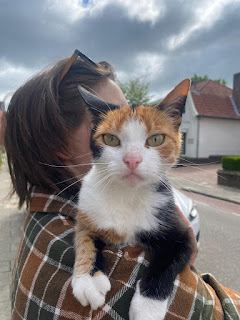Can we Create a Bikeable America?
When I signed up to go on this trip I had a feeling that it would be one of the most exciting things I have ever done, but I had no way of knowing that it would make me feel like my life has been changed for the better in so many ways. Every day I find myself thinking and saying that I can't believe that this trip is actually school but at the same time, I truly feel like I am learning an immense amount, no matter what I am doing. Simply being in urban environments like Copenhagen and Odense has opened my eyes to what could be possible to achieve in American cities.
When we were in Denmark we met with Andreas Rohl who was the director of the bike program in Copenhagen from 2007 to 2015 and what he said totally changed my perspective on what it might be possible to do with bikes in America. When I first got to Copenhagen it was easy to assume that the city had always been a bike-centered society and so it would be nearly impossible to replicate anything of the like back home. However, I learned from Rohl that in as recently as 1970, Copenhagen was no better than an American city when it came to cars. It was fully car centered with little regard for bike safety or connectivity. It had wide car boulevards, few bike lanes, and as a result a lower quality of life. The shift came as an effect of the oil crisis in the '70s which made it increasingly costly to operate a motor vehicle. As more people got onto their bikes, the city saw fit to invest more in the bike infrastructure and everything else cascaded after that.
With gas prices so high right now it feels easy to draw parallels between the two situations, and it could be an opportunity for Americans to get out onto bikes to avoid the costs associated with the crisis we are in right now.
What a lot of city officials struggle with is the perception that there aren't a lot of people interested in biking in their communities, so people are hesitant to invest in creating a better bike network. However, when there is good bike infrastructure, more people use it. So you can't have more bikers until you have better infrastructure, and you can't get funding for bike infrastructure until there is evidence of sufficient interest. Its a classic chicken and egg scenario.
But not all hope is lost! We already know how to create a bikeable city (we don't need to rediscover it) now we just need to implement it. Even places like Copenhagen and Amsterdam have struggles with citizens being resistant to bike infrastructure changes, and yet they manage to prevail. So can we! Once people realize how much better bike infrastructure can positively impact their lives, hearts and minds will start to change.



Comments
Post a Comment